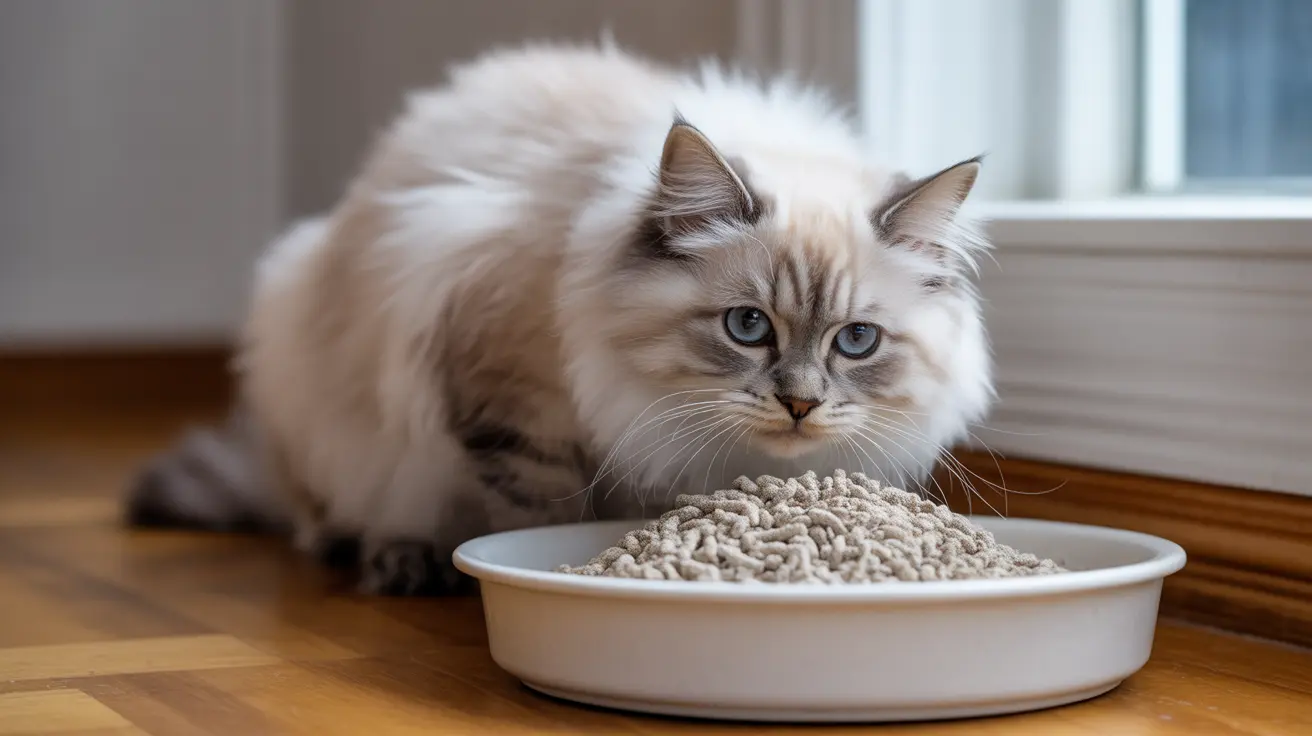Choosing the right cat litter is crucial for both your feline friend's wellbeing and your home's cleanliness. Unfortunately, not all cat litters are created equal, and some popular options can pose serious risks to your cat's health, your home, and the environment. This comprehensive guide will help you identify the worst cat litter types and understand why they should be avoided.
The Dangers of Sodium Bentonite Clumping Litters
While clumping litters might seem convenient, those containing sodium bentonite pose significant risks. This material expands up to 18 times its original size when wet, creating potential health hazards for cats, especially curious kittens who may ingest it while grooming.
The expansion properties that make these litters effective at clumping can also cause serious internal blockages if ingested. Additionally, the mining process used to obtain sodium bentonite creates lasting environmental damage through strip mining practices.
High-Dust Litters and Respiratory Health
Clay-based litters are notorious for producing excessive dust, which can trigger respiratory issues in both cats and humans. When cats dig or cover their waste, they inhale these fine particles, which may lead to asthma or worsen existing breathing problems.
The dust doesn't just affect respiratory health - it also creates a persistent cleaning challenge as particles settle on surfaces throughout your home. This is particularly problematic for households with allergy sufferers or those with compromised immune systems.
Artificial Fragrances and Scented Litters
Many manufacturers add artificial fragrances to mask odors, but these chemical additives can create more problems than they solve. Cats have highly sensitive noses and may avoid strongly scented litters, leading to inappropriate elimination behaviors.
The synthetic fragrances can also trigger allergic reactions and respiratory irritation in both cats and humans. Natural odor control through proper cleaning and maintenance is far safer than chemical masking agents.
Environmental Impact of Traditional Clay Litters
Non-biodegradable clay litters contribute millions of pounds of waste to landfills annually. These materials never break down and their production through strip mining causes significant environmental degradation.
The environmental impact extends beyond waste concerns - when clay litter is flushed down toilets, it can cause severe plumbing problems and contribute to water system issues.
Silica Gel and Crystal Litters: Hidden Drawbacks
While marketed as a dust-free alternative, silica gel litters come with their own set of problems. They're typically more expensive than other options and often provide inconsistent odor control. The crystals can also be uncomfortable for sensitive paw pads.
Some cats may ingest these crystals during grooming, which could potentially cause digestive issues. The manufacturing process of silica gel litters also raises environmental concerns.
Safer Alternatives to Problematic Litters
Instead of these problematic options, consider eco-friendly alternatives such as paper-based, wheat, or corn-based litters. These materials are generally safer for cats, produce less dust, and are biodegradable.
- Naturally clumping without harmful additives
- Low-dust or dust-free
- Unscented or naturally scented
- Biodegradable and environmentally responsible
- Safe if accidentally ingested
Frequently Asked Questions
What health risks do sodium bentonite clumping cat litters pose to cats and humans?
Sodium bentonite clumping litters can cause intestinal blockages if ingested, particularly in kittens. For humans and cats alike, the dust can irritate airways and potentially lead to respiratory issues. The expanding properties of sodium bentonite can cause serious internal complications if consumed during grooming.
How does dusty cat litter affect the respiratory health of cats and their owners?
Dusty cat litter can trigger asthma attacks, cause respiratory inflammation, and worsen existing breathing conditions in both cats and humans. The fine particles can be inhaled deeply into the lungs, potentially leading to chronic respiratory issues over time.
Why might pine-scented or artificially fragranced cat litters cause cats to avoid using their litter box?
Cats have extremely sensitive noses and may find strong artificial or natural scents overwhelming. This sensory overload can cause them to avoid their litter box, leading to inappropriate elimination behaviors elsewhere in the home.
What environmental problems are associated with traditional clay-based cat litters?
Clay-based litters are non-biodegradable and produced through environmentally damaging strip mining. They contribute significantly to landfill waste and can cause serious plumbing issues if flushed. The mining process destroys natural habitats and can contaminate local water sources.
What are safer, low-dust, biodegradable alternatives to the worst cat litters on the market?
Safer alternatives include paper-based litters, wheat-based products, corn-based options, and wood pellets. These alternatives are generally biodegradable, produce minimal dust, and are safer if accidentally ingested. Many also offer excellent odor control without artificial fragrances.






